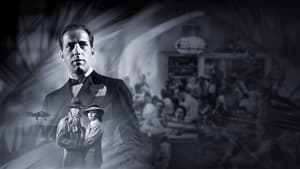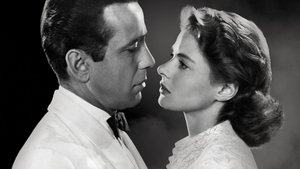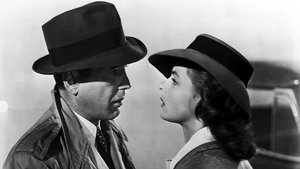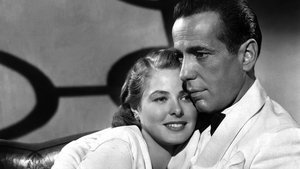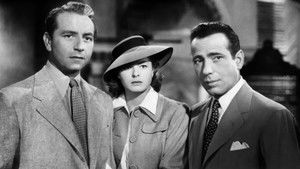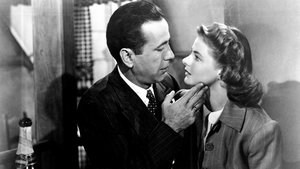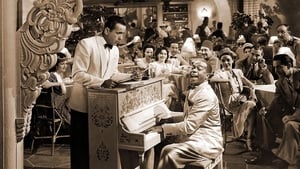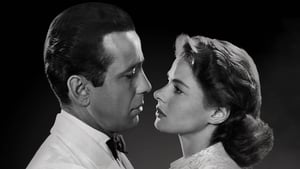Video Sources 0 Views
- Watch trailer
- Casablanca 1943 Colorized

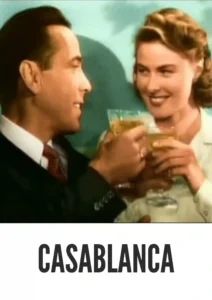
Synopsis
Table of Contents
Toggle
Step back in time to wartime Morocco with Casablanca, a captivating romantic drama from 1943, now beautifully colorized for a viewing experience like never before. Starring Humphrey Bogart and Ingrid Bergman, this film, directed by Michael Curtiz, delivers a poignant tale of love, sacrifice, and moral conflict against the backdrop of World War II. Often regarded as one of the greatest films of all time, this HD download brings a timeless masterpiece to a new generation of viewers. Known by titles such as Casa Blanca, and Cazablanca, experience the magic today.
Casablanca unfolds in the Moroccan city of Casablanca during World War II, where Rick Blaine (Humphrey Bogart), an American expatriate, runs a popular nightclub. Rick is a cynical and disillusioned man, hardened by past betrayals. His world is turned upside down when Ilsa Lund (Ingrid Bergman), a former lover, walks back into his life accompanied by her husband, Victor Laszlo, a renowned Czech Resistance leader.Ilsa and Victor need Rick’s help to escape to America and continue their fight against the Nazis. Torn between his love for Ilsa and his desire to do the right thing, Rick faces a difficult decision that will determine their fate. The film explores themes of love, sacrifice, duty, and the complexities of human relationships amidst the turmoil of war. With its iconic dialogue and memorable performances, Casablanca remains a powerful and enduring story.
The film features an iconic cast of actors who bring this timeless story to life:
- Humphrey Bogart as Rick Blaine
- Ingrid Bergman as Ilsa Lund
- Paul Henreid as Victor Laszlo
- Claude Rains as Captain Louis Renault
- Conrad Veidt as Major Heinrich Strasser
Casablanca falls into the genre of romantic drama, with elements of war, suspense, and intrigue that are characteristic of classic Hollywood cinema. Its emotional depth and compelling narrative make it a timeless and universally beloved film.
Released in 1943, Casablanca reflects the anxieties and sentiments of a nation at war, capturing the spirit of sacrifice and the hope for a better future. Produced during the Golden Age of Hollywood, the film exemplifies the studio system’s ability to create enduring works of art that resonate with audiences across generations. Its themes of love, duty, and moral courage continue to captivate viewers, solidifying its place as a cinematic masterpiece.
This colorized version of Casablanca has been meticulously restored using modern digital techniques, enhancing the visual appeal while preserving the film’s original atmosphere of romance and intrigue. The colorization process involved carefully analyzing the grayscale tones of the original black and white footage and assigning appropriate colors to each scene. While the specific software used remains proprietary, the techniques employed included advanced algorithms for color palette selection and image enhancement. This painstaking process brings new life to the characters and settings, making the story even more engaging for modern audiences. While some may debate the merits of colorizing classic films, it introduces these films to a broader audience, ensuring their legacy for future generations.
- : Michael Curtiz
- : Julius J. Epstein, Philip G. Epstein, Howard Koch
- : the play “Everybody Comes to Rick’s” by Murray Burnett and Joan Alison
- : Arthur Edeson
- : Owen Marks
- : Warner Bros. Pictures
- : Warner Bros. Pictures
- : 102 minutes
- : MP4
- : HD (1080p)
- : Compatible with most devices, including smartphones, tablets, computers, and smart TVs.
Casablanca (1943) is widely regarded as one of the greatest films of all time, celebrated for its compelling story, iconic performances, and timeless themes. It has won numerous awards, including the Academy Award for Best Picture, and continues to be studied and admired by film enthusiasts around the world. Its enduring popularity speaks to its universal appeal and its ability to resonate with audiences across generations.
- : What is Casablanca about?
- A: Casablanca is a romantic drama set during World War II, about an American expatriate who must choose between his love for a woman and helping her and her husband escape the Nazis.
- : Is Casablanca (1943) considered a classic film?
- A: Yes, Casablanca is widely regarded as one of the greatest films of all time, known for its iconic performances and timeless themes.
- : Is this version of Casablanca colorized?
- A: Yes, this version has been professionally colorized to enhance the viewing experience.
- : What makes Casablanca so beloved by audiences?
- A: Casablanca‘s enduring appeal lies in its compelling story, memorable characters, and its exploration of universal themes such as love, sacrifice, and duty.
- : What is the download format?
- A: The download format is MP4, which is compatible with most devices.
- : What resolution is the download?
- A: The resolution is HD (1080p), providing a high-quality viewing experience.
Watch Casablanca Today!
